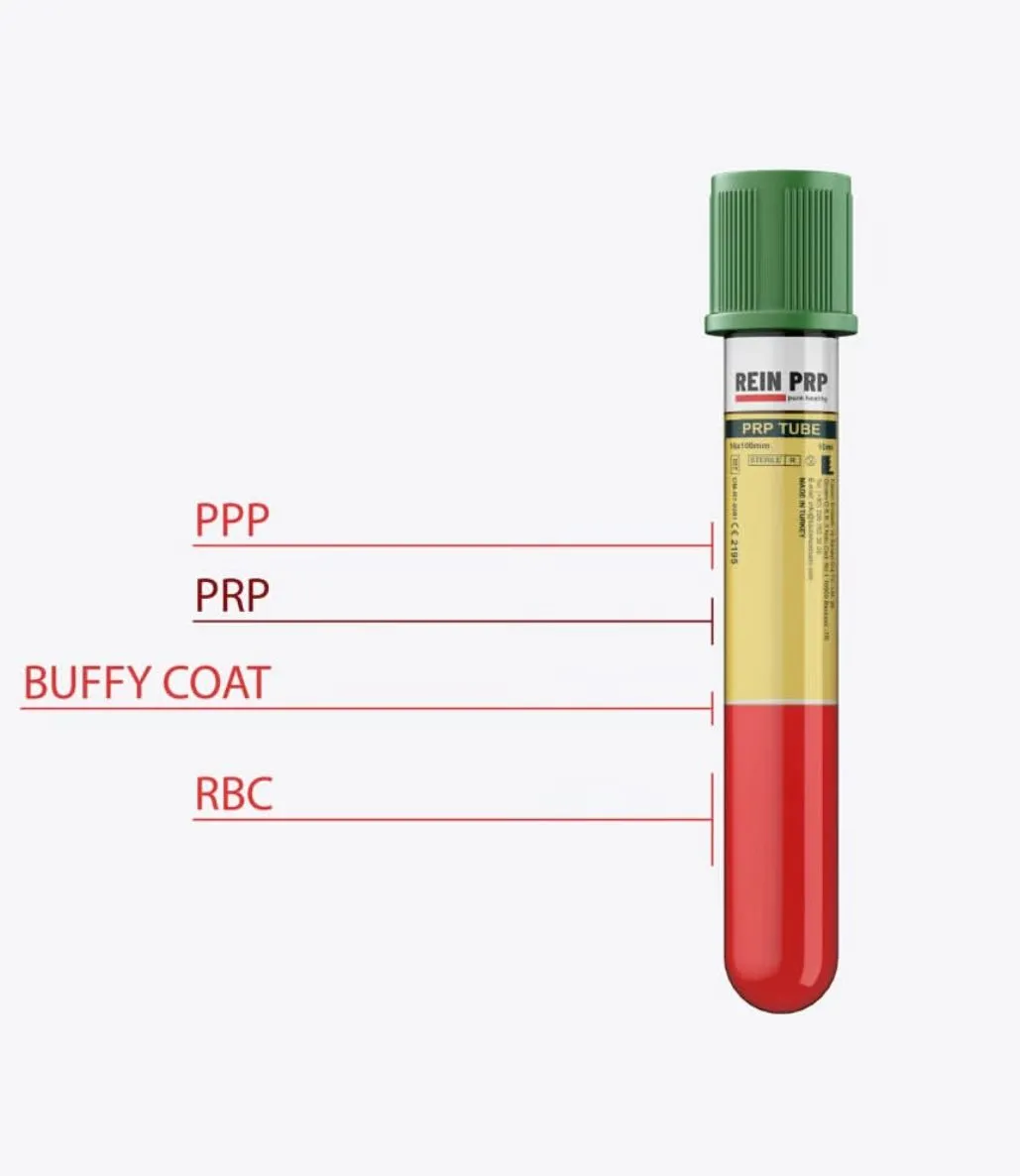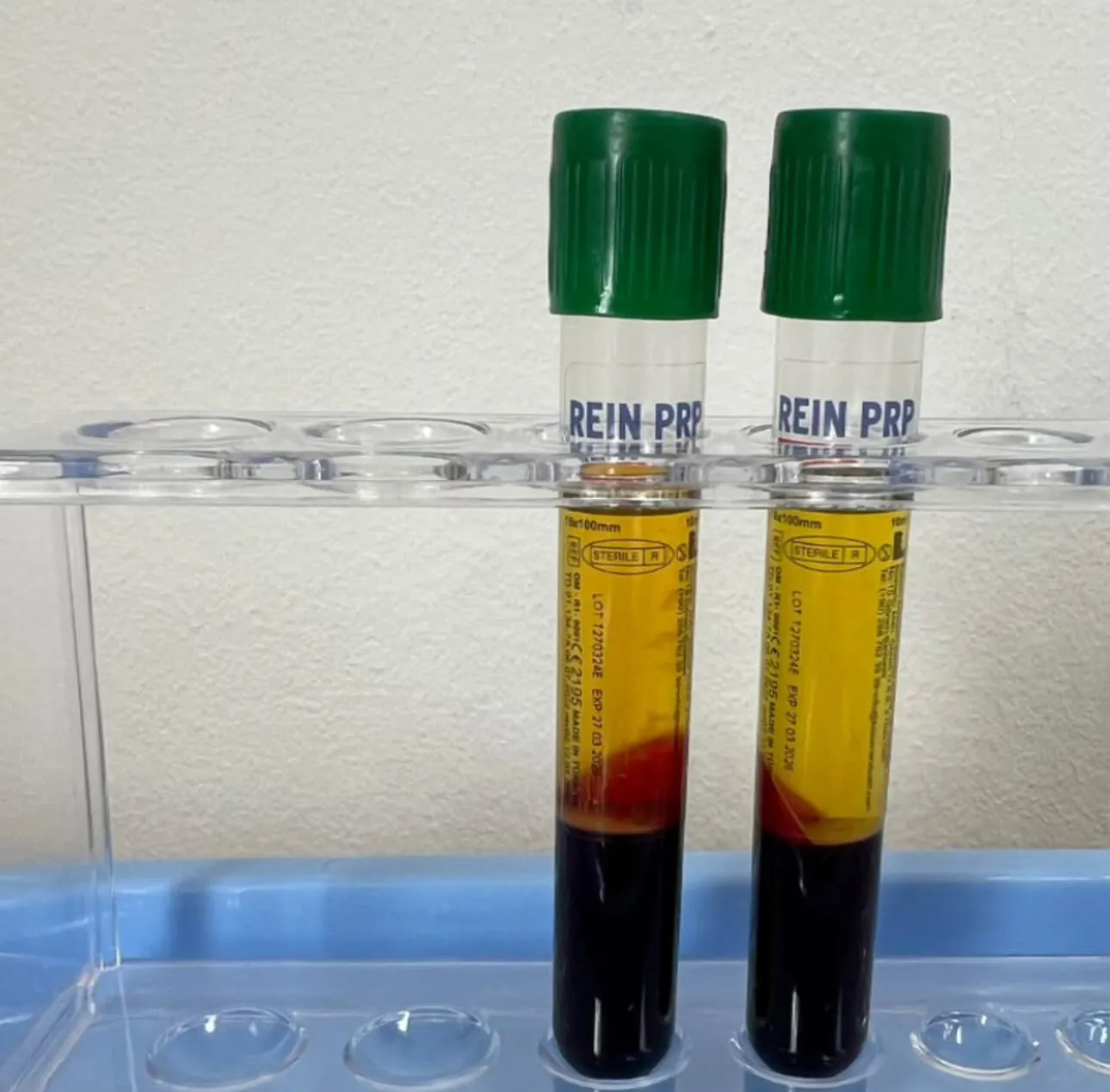Introduction: The Critical Need for Clarity in the UK Market
Navigating the UK market for PRP supplies can be a minefield. For every certified medical device, there are dozens of cheaper, non-compliant alternatives that put your patients, your results, and your professional reputation at risk. As a leading clinical practice, we've seen firsthand the confusion among practitioners about what constitutes a safe and effective PRP tube.
This guide was created to provide absolute clarity.
We will break down the critical differences between a true, medical-grade PRP tube and a standard blood collection tube. We will explain the severe consequences of using the wrong equipment and provide a clear checklist to ensure you are making the safest, most effective choice for your UK clinic.
The Fundamental Divide: Medical PRP Tube vs. Standard Blood Collection Tube
The most dangerous misconception is that 'a tube is just a tube.' In reality, they are engineered for fundamentally different purposes, and using a diagnostic tube for a therapeutic, re-injection procedure is a serious clinical error.
The distinction is simple: one is a Medical Device, the other is for In Vitro Diagnostic Use (IVDU).

Here is a direct comparison of the features that matter:
| Feature | Medical Grade PRP Tube (For Re-injection) | Standard Blood Collection Tube (For Lab Analysis) |
|---|---|---|
| Primary Purpose | To prepare a sterile, autologous substance for therapeutic re-injection into the human body. | To collect a blood sample for in vitro (outside the body) diagnostic analysis in a laboratory. |
| Certification | CE Marked as a Class IIa or Class IIB Medical Device. This is a legal requirement. | Not certified for therapeutic use. Using it for reinjection is 'off-label' and legally indefensible. |
| Internal Sterility | Guaranteed Pyrogen-Free. The internal environment is sterile to prevent inflammatory reactions upon injection. | Not guaranteed to be pyrogen-free. Only the cap is sterile for needle puncture. Pyrogens can cause fever & severe inflammation. |
| Anticoagulant | 3.13% Buffered Sodium Citrate. Proven to preserve platelet integrity, function, and viability for therapy. | Varies. Often EDTA or Heparin, which can damage platelet membranes and are not approved for injection. |
| Additives & Gels | None, or only those certified for injection. A gel-free design is superior to prevent contamination. | Often contains separator gels and additives that are not tested or approved for re-injection, posing a contamination risk. |
Why It Goes Wrong: The Clinical Consequences of Using the Wrong Tube
Choosing the wrong tube isn't just a minor error; it's a cascade of failures that compromises safety, efficacy, and your professional standing.

1. The Safety Risk: Pyrogens, Inflammation, and Your Patient
Pyrogens are fever-inducing remnants of bacteria that can persist even in a technically 'sterile' environment. A standard blood tube is not certified to be pyrogen-free internally.
When plasma from a non-medical tube is injected, these pyrogens can trigger a significant inflammatory response in the patient, leading to excessive swelling, pain, and redness. This is not the desired 'healing' inflammation; it's a sterile inflammatory reaction to foreign material, which can damage tissue and destroy patient trust.
2. The Efficacy Failure: Damaged Platelets and Inactive Plasma
The goal of PRP is to deliver a high concentration of viable, functional platelets. Standard blood tubes actively work against this goal:
- EDTA Anticoagulant: Found in lavender-top tubes, EDTA is known to cause ultrastructural damage to the platelet membrane. It alters the platelet shape and can interfere with the clotting and growth factor release process.
- Separator Gels: These gels, common in diagnostic tubes, are not approved for human injection. They can be accidentally aspirated along with the plasma, contaminating the PRP and reducing its purity and potency.
The result is a weak, unpredictable, and often clinically ineffective treatment, leading to poor patient outcomes and a damaged reputation.
3. The Legal & Insurance Minefield
In the UK, using a device for a purpose for which it is not certified ('off-label' use) carries significant medicolegal risk. If a patient has an adverse reaction and it is discovered you used a non-certified diagnostic tube for a therapeutic injection, your medical indemnity insurance may not cover you.
You are knowingly operating outside the established medical device regulations, which is a professionally indefensible position.
The Clinician's Checklist: 5 Non-Negotiable Demands for Your PRP Tubes UK Supplier
To protect your practice and your patients, your chosen PRP tube must meet these five criteria. Ask your supplier for proof.
- Is it CE Certified as a Medical Device (Class IIa or IIB)?
Demand to see the certificate. Any reputable supplier will provide this. Without it, the tube is not legal for PRP therapy in the UK. - Is the Anticoagulant 3.13% Sodium Citrate?
Confirm it is not EDTA or Heparin. Sodium Citrate is the established standard for preserving platelet viability for therapeutic use. - Is Each Tube Individually Blister-Packed and Gamma Irradiated?
This guarantees the highest level of sterility, right up to the point of use. Bulk-packed tubes do not offer the same level of protection. - Is the Design Free of Unapproved Separator Gels?
A gel-free design provides cleaner separation and gives the clinician full control over aspirating the buffy coat layer, eliminating the risk of gel contamination. - Is There a Validated Centrifuge Protocol?
A professional medical device will have a recommended protocol (G-force and time) that is proven to produce a high concentration of platelets.
The Logical Conclusion: Meeting the Gold Standard in Your Practice
Once you apply this rigorous checklist, the market noise fades away, and the choice becomes clear.
In our clinical practice, we exclusively use Rein PRP Tubes because they were selected against these exact criteria. They are CE Class IIB certified, use the correct Sodium Citrate anticoagulant, feature a superior gel-free design, and have a validated protocol that delivers a consistent 4-6x platelet concentration.
They are not just a product we sell; they are the clinical standard we trust for our own patients.
- Further Reading: A Clinician's Guide to Rein PRP Tubes: Maximising Yield and Safety
- View Product: Explore CE Certified Rein PRP Tubes & Kits for Your Clinic
Frequently Asked Questions
1. Can I use a regular blood tube (like a Vacutainer) for PRP?
No, you absolutely should not. As detailed in this guide, they are not certified or designed for re-injection, carry significant safety and legal risks, and produce a clinically inferior product.
2. What is the difference between CE Class IIa and IIB for PRP tubes?
Both are certifications for medical devices. Class IIB is a higher classification, indicating a slightly higher potential risk, and therefore requires more rigorous oversight by a Notified Body. Both are acceptable for PRP, but Class IIB demonstrates an even higher level of regulatory scrutiny.
3. Why are some PRP tubes so much cheaper?
Tubes that are significantly cheaper are almost certainly not certified medical devices. They are likely basic diagnostic or research tubes being improperly marketed. The cost difference reflects the investment in quality control, sterile manufacturing (ISO Class 8 cleanrooms), and regulatory compliance required for a medical device.
Conclusion: A Medical Decision, Not a Commodity Purchase
The PRP tube you choose is a critical medical decision that directly impacts patient safety and clinical outcomes. It is not a commodity to be sourced based on price.
By insisting on a CE-certified medical device like Rein PRP, you are upholding the highest standard of care. You protect your patients from unnecessary risks, deliver the potent and predictable results they expect, and safeguard the long-term integrity of your practice.
Frequently Asked Questions
Can I use a regular blood tube (like a Vacutainer) for PRP?
No, you absolutely should not. Standard blood collection tubes are designed for in-vitro diagnostic use, not for therapeutic re-injection. They are not guaranteed to be pyrogen-free and often contain anticoagulants like EDTA that can damage platelets, posing significant safety and legal risks for UK clinicians.
What is the difference between CE Class IIa and IIB for PRP tubes?
Both are certifications for medical devices suitable for PRP. Class IIB is a higher classification requiring more rigorous regulatory oversight, indicating it's intended for a purpose with slightly higher potential risk. Both demonstrate the tube is a legally compliant medical device for use in the UK.
Why are some PRP tubes so much cheaper?
Significantly cheaper tubes are almost certainly not certified medical devices. The lower cost reflects a lack of investment in crucial safety and quality steps, such as using ISO-certified cleanrooms, ensuring pyrogen-free internal sterility, and undergoing the rigorous auditing required for CE certification as a medical device.